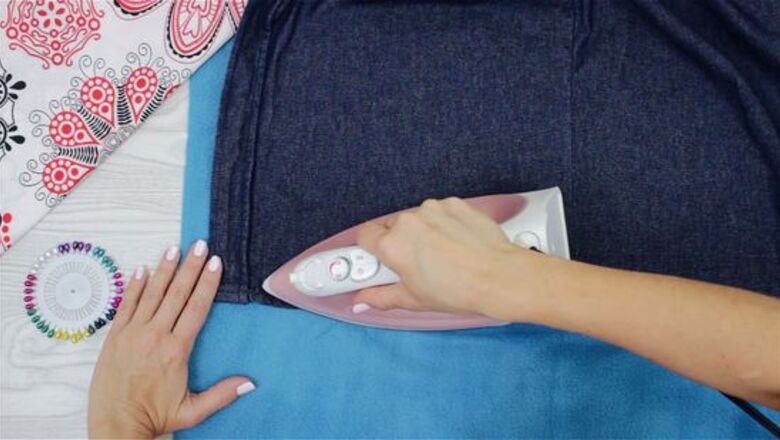
views
Folding the Hem

Iron the garment you wish to hem. It's important to remove any creases and bumps so that the garment is sitting flat and the hemline you create will be accurate.

Measure the hemline. Put on the garment, stand in front of a mirror, and decide where you'd like the new hem to fall. Mark that point with pins or chalk. It may be helpful to have a friend help with this step. In determining the hem length, it's recommended that you wear the shoes that you'll be wearing with the particular garment, as this will ensure the final length is most accurate.
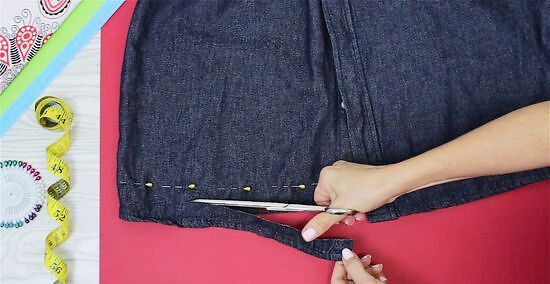
Trim the fabric to a suitable length below the chalk or pin line. First, decide how deep you want the hem, then trim the excess fabric. There should be enough fabric to accommodate the hem depth. For example, if you want a 1 inch (2.5 cm) deep hem, leave 1 inch (2.5 cm) of fabric below the hemline. There must be enough fabric left to be able to turn up the hem, but not too much, or the hem may appear bulky. A one inch (2.5 cm) hem may be recommendable for pants, while 3/4 inch (2 cm) works well for blouses.

Fold the hem. For most hems, you can make single fold along the hemline, wrong side to wrong side. The wrong side of the fabric is the "inside" of the garment, the side you don't see. The "right side" is the side you see on the exterior.
Choosing a Stitch

Use a whipstitch if you don't have a lot of time. This is a quick method, but it's the least durable because the thread is exposed and is easily frayed. On the wrong side of the garment it produces slanted stitches, while on the right side it makes very small, barely visible stitches. Hide your thread knot and bring the thread from the inside through the outside of the hem fold. Moving from right to left (or left to right if you're left-handed), cross over diagonally and pick up a few threads of the fabric above the fold. Keep the needle pointed in the direction in which you're working. Bring the needle back out through the fold and repeat.
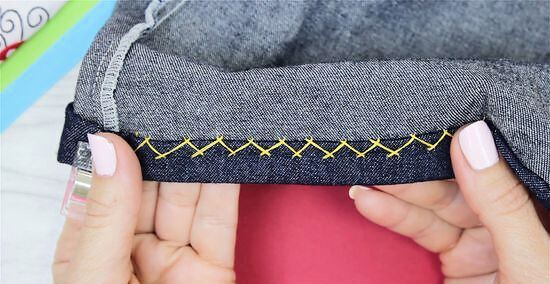
Try a catch stitch for more elasticity and strength. The catch stitch creates a slight criss-cross effect on the wrong side and small, and nearly-invisible stitches on the right side. Take note: this stitch moves in the opposite direction than you would normally work. Right-handed people will work left to right, while left-handed people will work right to left. Hide the knot by pulling the needle outwards through the fold. Point the needle in the opposite direction from the one in which you're working. Pick up a few threads of the fabric just above the hem and pull through. Now pick up a bit of fabric from the hem and pull through, with the needle still facing in the opposite direction, and repeat.
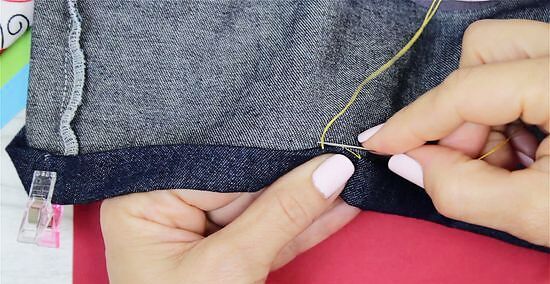
Make a slip stitch hem for near invisibility. This technique makes clean, tiny stitches on both the right and wrong sides for a clean finish. It gets its name from the stitches that slip through the fold of the hem edge. Righties work right to left with the needle pointed left; lefties, left to right with a right-pointing needle. Hide the knot by pulling the needle outwards through hem, right at the very edge of the fabric. In the fabric just above the hem, pick up a few threads and pull the needle through. Reinsert the needle into the edge of the fold, just below where the previous stitch ended. Pull it through the edge of the hem about 1/4 inches (7mm), as if you were pulling it through a tube of fabric, and then outwards. Repeat the first three steps.
Make a fell stitch for extra durability. The fell stitch is very strong, but leaves a row of conspicuous diagonal stitches on the right side. If you're dealing with very thick fabric, you can try making the stitches without passing all the way through so the stitches are not visible from the exterior. Righties work right to left with the needle facing left; lefties work left to right with the needle facing right. Hide the knot by passing the needle outward through the upper edge of the hem fold. Pass the needle through the fabric above the hem edge, about 1/4-1/2 inch (6-13 mm) long. Complete the stitch by passing the needle through a few threads of the top of the hem fold. Start your next stitch in the fabric right above the end of the previous one and repeat. Alison Smith Alison Smith, Master Tailor The meticulous process of sewing a hem by hand can achieve an unparalleled degree of refinement and durability compared to machine sewing. Each stitch is placed deliberately, resulting in a seam that is not just sturdy but nearly imperceptible from the exterior side of the fabric. Whether working with delicate textiles or pursuing a couture-level finish, mastering hand-sewn hems can greatly elevate the sophistication of sewing projects. The crucial factors for a flawless hand-sewn hem are uniformity of stitching and quality thread. Patience and care are required. Do not hesitate to remove and re-sew if needed. Expertise develops through practice.
Sewing the Hem
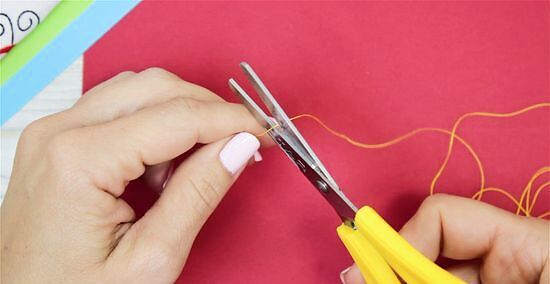
Measure and cut your thread. The length you use depends on the circumference of the hem, but it's always better to have too much thread than too little. A good rule of thumb is to use around 18 inches (46 cm), or an arm-length of thread. Use a thread that matches the garment color as closely as possible.
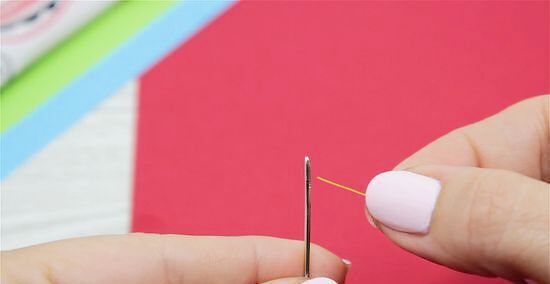
Prepare your needle and garment. Thread a small needle and tie a knot at the other end of the thread. Turn your garment wrong-side out. Work with the hemline facing towards you.
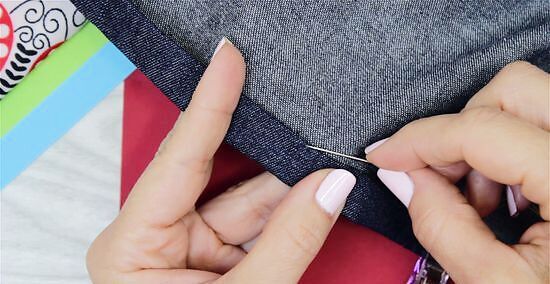
Start with a tiny stitch at the seam line on the wrong side of the hem. In other words, you're bringing the needle up from behind the upper edge of the hem fold. Do not pass this stitch through to the right side of the garment. It should only go through the hem fold.
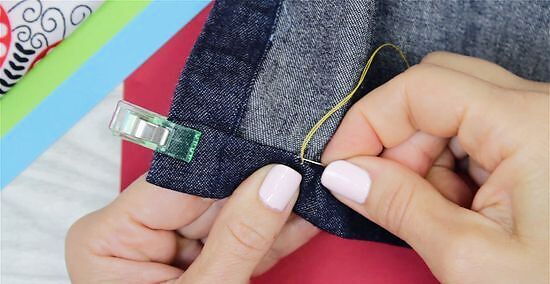
Make your stitch pattern. Keep stitching around, working from right to left, or left to right. Make small, evenly-spaced stitches. While the thread should not be excessively slack, never pull the stitches tightly.
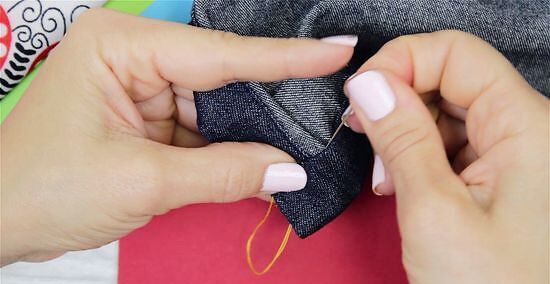
Knot the thread at the end of stitching the hem. Make a small stitch twice in the same place on the edge of the hem fold as your first stitch, but for this last stitch, do not pull the thread all the way through. Pass the needle through the loop twice, then tighten the knot by pulling on the thread. Hide the "tail" of the thread by passing the needle horizontally about 1 inch (2.5 cm) in between the folded hem. Do not pierce all the way through to the right side of the garment. Bring the needle out onto the wrong side and cut away the remaining thread.
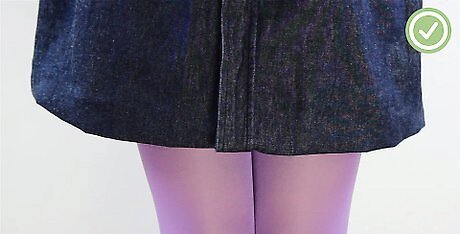
Try on the garment to test the balance of the hemline. Hopefully it's good to go; otherwise, you will need to adjust by unpicking and resewing any areas that appear uneven. If you've used the quick-and-easy whipstitch to hand hem your item but you want the hem to be more durable, simply use one of the other methods suggested above or machine stitch the hem at a later date. The beauty of the whipstitch method is that it allows for temporary fixes or testing of hem lengths, which can be ideal for travel, fashion shows or shoots, designing, and so on.



















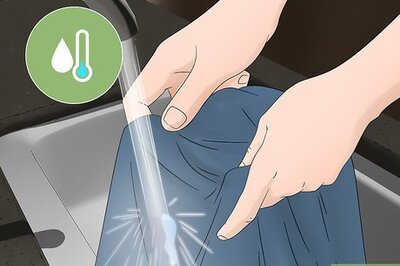
Comments
0 comment